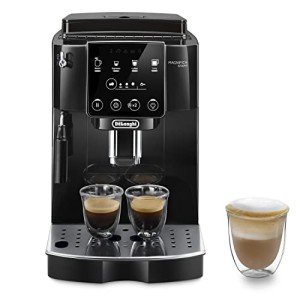Bean To Cup Espresso Coffee Machine: The Ultimate Guide
In recent years, the coffee culture has actually experienced a considerable change, with the rise of home brewing devices providing benefit and quality similar to coffee shop offerings. Among these devices, the Bean to Cup Espresso Coffee Machine sticks out as a preferred among coffee lovers and casual drinkers alike. This detailed guide explores what these machines are, how they work, the benefits they use, and factors to consider when choosing the right one.
What is a Bean to Cup Espresso Coffee Machine?
A Bean to Cup Espresso Coffee Machine is an advanced coffee brewing device that grinds coffee beans fresh for each cup, automating the entire espresso-making process. These machines typically include built-in grinders, incorporated milk frothers, and exact developing innovation, permitting users to create high-quality espressos, lattes, cappuccinos, and more, all from the comfort of their homes. The benefit, matched with the abundant and robust flavors produced, has made these machines progressively popular.
How Does It Work?
The standard operation of a Bean to Cup Espresso Coffee Machine can be broken down into numerous crucial steps:
Bean Grinding
- The machine grinds whole coffee beans right away before brewing, guaranteeing maximum freshness and flavor retention.
Brewing
- Ground coffee is loaded into a filter, and warm water is required through the coffee premises at high pressure, which is essential for creating espresso.
Frothing (Optional)
- Many designs include a steam wand or milk frother for preparing frothed milk for lattes and cappuccinos.
Serving
- The last involves dispensing the brewed coffee into a cup, typically with programmable features for modification.
Benefits of Bean to Cup Espresso Machines
Purchasing a Bean to Cup Espresso Coffee Machine offers numerous benefits, adding to its growing popularity.
| Advantage | Description |
|---|---|
| Convenience | One-touch operation reduces the time and effort required to prepare coffee. |
| Quality | Newly ground beans result in a richer, more flavorful beverage compared to pre-ground options. |
| Personalization | Users can change settings to suit personal choices, including grind size, coffee strength, and milk froth levels. |
| Cost-efficient | Although the initial investment might be high, savings on coffee buy from cafés can be considerable gradually. |
| Adaptability | The capability to brew different coffee types, from espresso to cappuccino, broadens the machine's appeal. |
Secret Features to Look For
When choosing a Bean to Cup Espresso Coffee Machine, numerous features can affect the purchase choice. Below are essential factors to consider:
Grinder Type
- Burr grinders are chosen over blade mills for their constant grind size.
Developing Pressure
- Look for machines that provide a minimum of 15 bars of pressure for ideal espresso extraction.
Milk Frother
- Choose between manual steam wands or automatic milk frothers based upon choices for milk texture and foam.
User Interface
- An user-friendly control panel with programmable settings boosts the general experience.
Size and Design
- Consider the countertop area offered and choose a design that complements your kitchen visual appeals.
Maintenance Options
- Some machines provide automatic cleansing cycles, which can save time and effort in upkeep.
Popular Bean to Cup Espresso Machines
Choosing a machine that fits one's requirements can be challenging. Below is Beans To Cup of popular designs, known for their dependability and performance.
| Model | Key Features | Rate Range |
|---|---|---|
| De'Longhi Magnifica ESAM3300 | Adjustable coffee strength, compact style | ₤ 550 - ₤ 700 |
| Breville Barista Touch | Touchscreen controls, integrated conical burr mill | ₤ 800 - ₤ 1,150 |
| Saeco PicoBaristo | Automatic milk frother, 12 coffee specializeds | ₤ 900 - ₤ 1,300 |
| Jura E8 | Pulse Extraction Process, Alexa Compatible | ₤ 1,800 - ₤ 2,500 |
| Gaggia Anima | Easy to clean, programmable settings | ₤ 500 - ₤ 800 |
Maintenance Tips
Keeping a Bean to Cup Espresso Coffee Machine in good condition is vital for ensuring durability and ideal performance. Here are some maintenance tips:
- Regular Cleaning: Clean the machine's parts regularly, consisting of the drip tray, coffee grounds container, and water reservoir.
- Descaling: Perform descaling every couple of months based upon water hardness and usage to avoid mineral buildup.
- Modification Water Filter: If the machine has a water filtering system, alter the filter as advised.
- Inspect Seals and Gaskets: Check for wear and tear to avoid leakages and ensure correct pressure during brewing.
FAQs
1. Are Bean to Cup Espresso Machines easy to use?Yes, most designs are developed for user benefit with easy control board and one-touch operation. 2. Can I use pre-ground coffee in these machines?While some machines enable using pre-ground coffee, the primary benefit lies in using whole beans for fresh grinding. 3. How often ought to I clean my Bean to Cup machine?Regular maintenance is crucial; daily cleaning of detachable parts and descaling every 2-3 months are generally recommended. 4. What is the average
life expectancy of a Bean to Cup Espresso Coffee Machine?With proper maintenance, these machines can last anywhere from 5 to 15 years based upon use quality
. 5. Are these machines worth the investment?Though they can be costly, the convenience, quality coffee production, and long-lasting savings make them a deserving financial investment for numerous coffee enthusiasts. Buying a Bean to Cup
Espresso Coffee Machine can significantly improve the home
coffee experience. By offering newly brewed, high-quality coffee, these machines cater to the growing need for café-style beverages in the comfort of one's kitchen area. With many alternatives on the market, understanding functions and individual choices will aid in selecting the ideal machine to suit any coffee enthusiast's needs.

